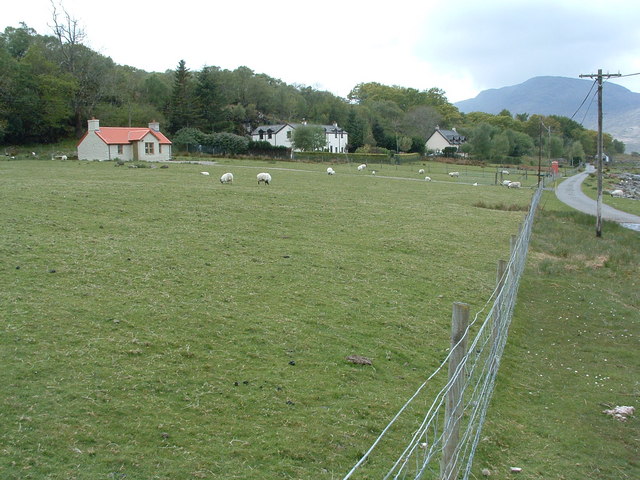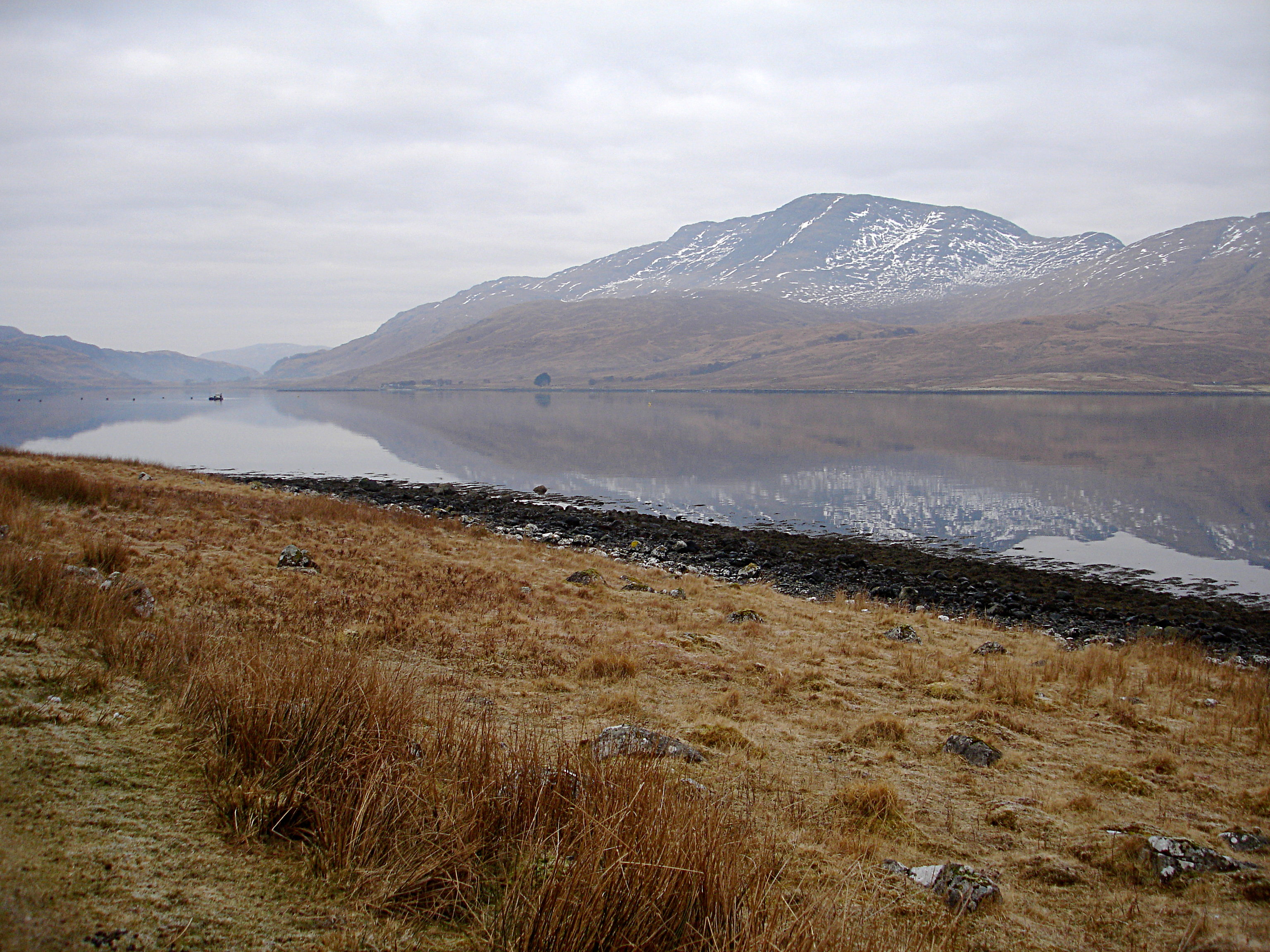Aoineadh Tràigh Gheal
Cliff, Slope in Argyllshire
Scotland
Aoineadh Tràigh Gheal

Aoineadh Tràigh Gheal, located in Argyllshire, Scotland, is a mesmerizing cliff and slope formation that exhibits stunning natural beauty. This geographical feature is renowned for its picturesque landscapes and unique geological characteristics.
Situated along the western coast of Scotland, Aoineadh Tràigh Gheal offers breathtaking views of the surrounding area. The cliff, rising several meters above sea level, provides an awe-inspiring vantage point to observe the vast expanse of the Atlantic Ocean. Its rugged and dramatic structure is a testament to the forces of erosion that have shaped it over thousands of years.
The slope of Aoineadh Tràigh Gheal, covered in lush vegetation, descends gradually towards the shoreline. This slope is home to a diverse ecosystem, supporting a wide array of plant and animal species. The flora found here includes hardy grasses, heather, and gorse, while seabirds such as gannets and puffins are commonly spotted soaring above the cliff face.
The area surrounding Aoineadh Tràigh Gheal is rich in cultural heritage, with ancient ruins and historical sites scattered throughout. Visitors can explore nearby castles, burial mounds, and archaeological remains, providing a glimpse into the region's past.
Aoineadh Tràigh Gheal is a popular destination for hikers, nature enthusiasts, and photographers, who are captivated by its natural beauty and tranquility. With its breathtaking views, diverse wildlife, and historical significance, this cliff and slope formation in Argyllshire continues to be a cherished gem in Scotland's natural landscape.
If you have any feedback on the listing, please let us know in the comments section below.
Aoineadh Tràigh Gheal Images
Images are sourced within 2km of 56.343336/-5.7462263 or Grid Reference NM6823. Thanks to Geograph Open Source API. All images are credited.






Aoineadh Tràigh Gheal is located at Grid Ref: NM6823 (Lat: 56.343336, Lng: -5.7462263)
Unitary Authority: Argyll and Bute
Police Authority: Argyll and West Dunbartonshire
What 3 Words
///tricky.overtones.response. Near Lochbuie, Argyll & Bute
Nearby Locations
Related Wikis
Firth of Lorn
The Firth of Lorn or Lorne (Scottish Gaelic: An Linne Latharnach) is the inlet of the sea between the south-east coast of the Isle of Mull and the mainland...
Croggan
Croggan is a small scattered settlement on the Loch Spelve sea loch, in the south of the Isle of Mull, Argyll and Bute, Scotland. It is located in the...
Loch Spelve
Loch Spelve is a sea loch on the southeast coast of the Isle of Mull, off the west coast of Scotland. It is almost landlocked with a relatively narrow...
Creach-Beinn (Mull)
Creach-Beinn (698 m) is a mountain in the south of the Isle of Mull, Scotland. It rises above the northern shore of Loch Spelve. A rocky mountain with...
Moy Castle
Moy Castle is a ruined castle near Lochbuie on the Isle of Mull, Scotland. The site is now a scheduled monument. == History == The land upon which Moy...
Lochbuie, Mull
Lochbuie (Scottish Gaelic: Locha Buidhe, meaning "yellow loch") is a settlement on the Isle of Mull in Scotland about 22 kilometres (14 mi) west of Craignure...
Easdale
Easdale (Scottish Gaelic: Eilean Èisdeal) is one of the Slate Islands, in the Firth of Lorn, Scotland. Once the centre of the Scottish slate industry,...
Ellenabeich
Ellenabeich (Scottish Gaelic: Eilean nam Beitheach, meaning "island of the birchwoods.") is a small village on the isle of Seil (Scottish Gaelic: Saoil...
Nearby Amenities
Located within 500m of 56.343336,-5.7462263Have you been to Aoineadh Tràigh Gheal?
Leave your review of Aoineadh Tràigh Gheal below (or comments, questions and feedback).

















